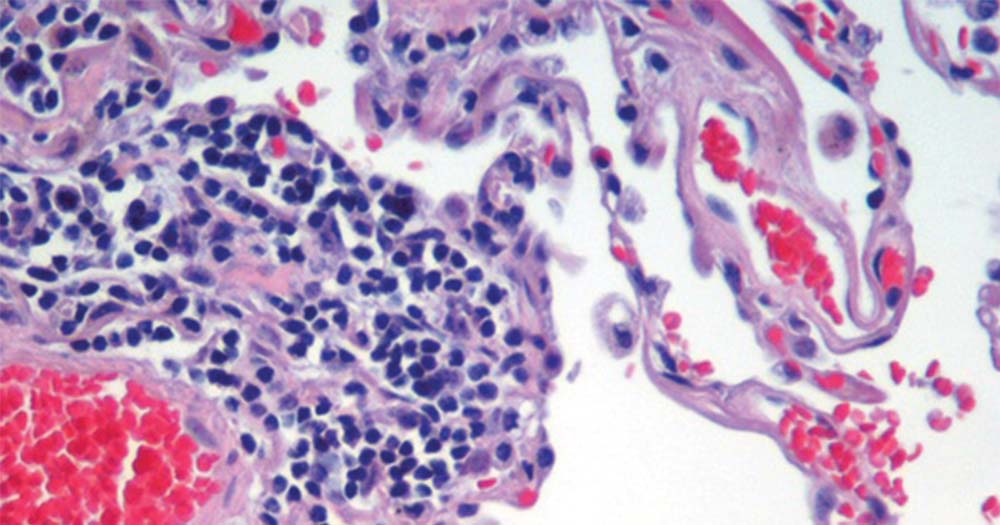Hematoxylin and eosin staining technique functions to recognize different types of tissues and their morphological changes, especially in cancer diagnosis. Hematoxylin has a deep blue-purple color and stains nucleic acids by a complex, incompletely understood reaction. Eosin is pink and stains proteins nonspecifically. In a typical tissue, nuclei are stained blue, whereas the cytoplasm and extracellular matrix have varying degrees of pink staining.
Hematoxylin and Eosin stain is the primary diagnostic stain used in histology and Histopathology including application in the Fine-needle Aspiration Biopsies, Paraffin Fixed embedded tissue. Hematoxylin is used to demonstrate the nuclear of the cell and its content, by observing the depth of the color of dye and the time of sample suspension in the dye.
Hematoxylin and eosin are both dyes, and naturally, dyes have a high affinity for tissues, depending on the Acidity and/or alkalinity of the dyes.
Interesting Science Videos
Objective
To demonstrate the morphologies of tissues and cells.
Principle
Hematoxylin is extracted from Hematoxylon campechianum tree upon which on oxidation, hematein is produced from hematoxylin, the dye used in the hematoxylin and Eosin staining technique. Adding a mordant enables hematein to bind to the anionic elements of the tissues. Hematoxylin without eosin acts a counterstain in immunohistochemical and hybridization protocols that use colorimetric substrates (such as alkaline phosphatase or peroxidase)
Eosin dye is acidic dye hence it as a negative charge (eosinophilic). Therefore it stains the basic structures of a cell (acidophils), giving them a red or pink color, for example, the cytoplasm is positively charged, and therefore it will take up the eosin dye, and appear pink.
Hematoxylin dyes are basic dyes, hence they are positively charged. Therefore it will stain the acidic structures fo tissues and cell structures (basophilic), purplish-blue. Hematoxylin is not basic by itself. It has to be conjugated with a mordant (aluminum salt) before it is used so as to strengthen its positive charge for efficiency in binding to the tissue components. The mordant, which also defines the color of the stain, will bind to the tissue, then the hematoxylin will bind to the mordant to form a tissue-mordant-hematoxylin complex link. This will stain the nuclei and chromatin bodies purple.
H &E stain can be classified into three types: progressive, modified progressive, and regressive. Progressive staining takes place without a differentiator for removing any excess dye after adding hematoxylin. This cause background staining to occur in charged slides. Its mainly used to stain Mucin. While the Modified progressive and regressive, use a differentiator in removing excessive dyes. It is used for the demonstration of nucleus content.
Reagents
- Distilled water
- Alum hematoxylin
- Acid alcohol
- Scott’s tap water
- Eosin dye
Procedure
The procedure is simplified into various processes: Dewaxing, Dehydration, Hematoxylin, Differentiation, Bluing, Eosin, Dehydration, Clearing, Cover-slipping.
The steps include:
- Clean the sections to distilled water.
- Then stain nuclei with the alum hematoxylin (Mayer’s) to fix the tissue, for about 5 minutes.
- Rinse the stain with smoothly running tap water
- Using the differentiator, 0.3% acid alcohol, and note the endpoint i.e the correct endpoint is after bluing up, the background becomes colorless.
- Rinse the stain in smoothly running tap water.
- Rinse the satin in Scott’s tap water substitute which shortens the time for the correct end-point.
- Rinse with running tap water
- Flood the smear with eosin for 2 mins, and since eosin is highly soluble in water, use enough quantify of it. The over stained eosin can be removed or washed off with running tap water.
- Dehydrate the smear, clear, and mount using a clean coverslip.
Results and Interpretation
Nuclei are stained blue, whereas the cytoplasm and extracellular matrix have varying degrees of pink staining. Well-fixed cells show considerable intranuclear detail. Nuclei show varying cell-type- and cancer-type-specific patterns of condensation of heterochromatin (hematoxylin staining) that are diagnostically very important. Nucleoli stain with eosin. If abundant polyribosomes are present, the cytoplasm will have a distinct blue cast.

Figure: Lung tissue taken from an emphysema patient. Cell nuclei (blue-purple), red blood cells (bright red), other cell bodies and extracellular material (pink), and air spaces (white). Image Source: Wikipedia
Applications
It is widely used in Histopathology, Immunochemistry, and Immunopathology to analyze and demonstrate morphologies of tissues, and cells.
Advantage
The method is quick to execute, cheap and can be altered
Limitation
References and sources
- Hematoxylin and eosin staining of tissue and cell sections. Fischer AH, Jacobson KA, Rose J, Zeller R.
- H&E Staining Overview: A Guide to Best Practices Cindy SampiasGeoffrey Rolls
- The Science and Application of Hematoxylin and Eosin Staining Skip Brown
- https://www.histology.leeds.ac.uk/what-is-histology/H_and_E.php
- https://www.ihcworld.com/_protocols/special_stains/h&e_ellis.htm
- https://www.labce.com/spg464557_mordants.aspx
Sources
- 6% – https://www.ncbi.nlm.nih.gov/pubmed/21356829
- 4% – https://www.ncbi.nlm.nih.gov/pmc/articles/PMC4804027/
- 13% – https://imaging.nd.edu/our-services/histology/instruments-and-services/protocols/
- 1% – https://quizlet.com/103579759/gram-stain-flash-cards/
- 1% – https://media.nature.com/original/nature-assets/nprot/journal/v12/n3/extref/nprot.2017.003-S1.pdf
- 1% – http://mhpl.facilities.northwestern.edu/files/2013/10/The-Science-and-Application-of-Hematoxylin-and-Eosin-Staining-6-5-2012.pdf

Easy to understand…. thank you
Very helpful notes for me.
Thanks a lot ♥️